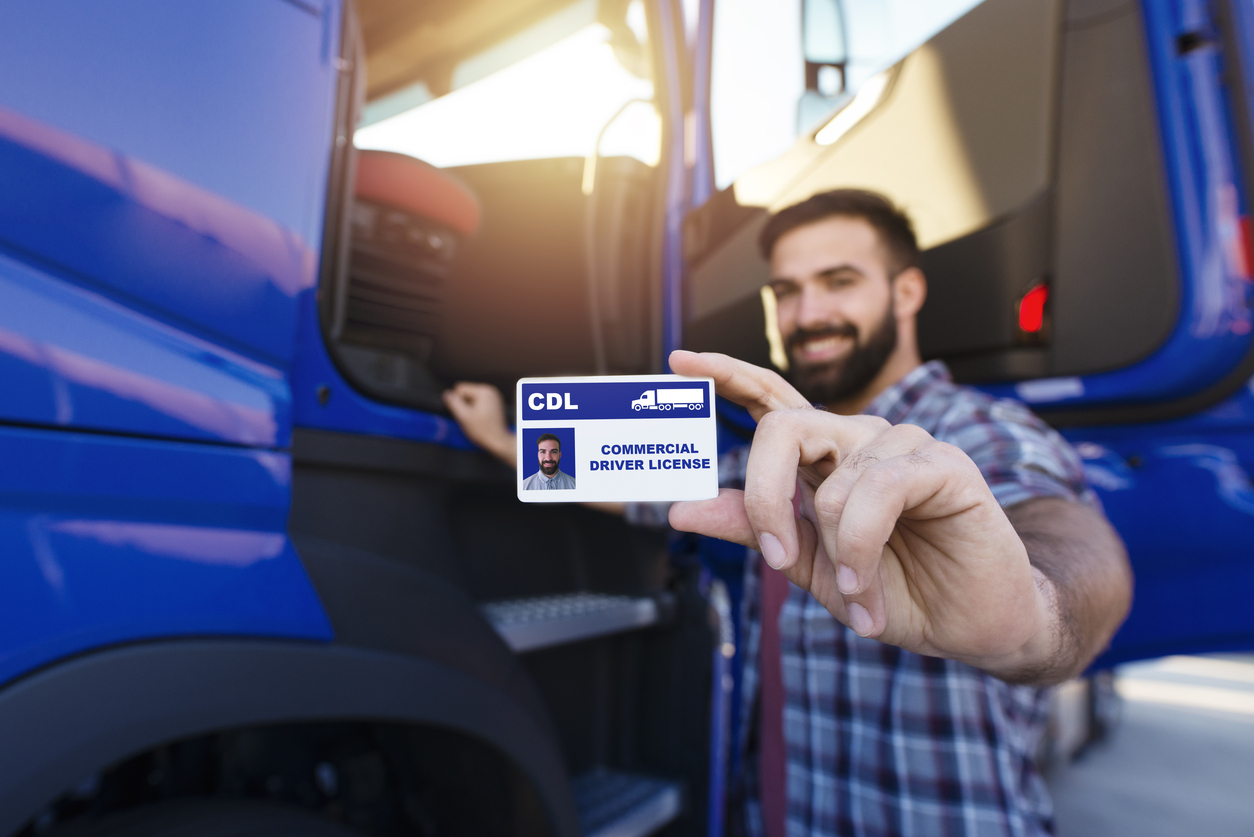- 2 Nov 2025

Understanding the types of commercial drivers licenses in Oklahoma is a critical first step for anyone planning to operate large vehicles across state or intrastate lines. Whether you’re aiming to drive a school bus, haul hazardous materials, or transport livestock, the type of license and required endorsements matter significantly under both state and federal regulations. This guide breaks down the classification system, the role of endorsements, and what new commercial drivers in Oklahoma need to prepare for before applying.
Why Understanding the Types of Commercial Drivers Licenses in Oklahoma Matters
Oklahoma enforces strict guidelines under the Federal Motor Carrier Safety Administration (FMCSA) and state laws for those seeking commercial driving credentials. Each type of commercial drivers license in Oklahoma is designed to reflect the size of the vehicle, the nature of the cargo, and public safety considerations.
From Class A licenses for combination vehicles to specific endorsements for passenger or hazardous material transport, aligning your training and testing with the correct licensing path can affect not only your career opportunities but also your legal compliance. Drivers unaware of these distinctions may face disqualification, fines, or even criminal liability under Oklahoma statutes.
Class A, B, and C: The Primary Types of Commercial Drivers Licenses in Oklahoma
The Oklahoma Department of Public Safety (DPS) categorizes commercial licenses into three main classes: Class A, Class B, and Class C. Each class defines specific vehicle capabilities and limits.
Class A: Heavy Combination Vehicles
For new drivers looking to operate combination vehicles such as tractor-trailers or tankers, a Class A commercial license is mandatory. This license is required when the towed vehicle exceeds 10,000 pounds and the gross combination weight rating (GCWR) surpasses 26,001 pounds. Many long-haul truckers and interstate drivers in Oklahoma fall into this category.
Class B: Heavy Straight Vehicles
Class B licenses are ideal for drivers handling single vehicles over 26,001 pounds, such as dump trucks, straight trucks, or certain buses. Although trailers under 10,000 pounds may be attached, the primary focus is on operating heavy-duty single-unit vehicles. Many commercial drivers working within construction, utility, or public transport industries in Oklahoma hold this type.
Class C: Smaller Vehicles Carrying Passengers or Hazardous Materials
Class C is necessary when transporting 16 or more passengers (including the driver) or carrying hazardous materials that require placarding. While the vehicles are smaller, the regulatory obligations are more complex. This class typically includes school bus drivers, shuttle drivers, and hazmat carriers.
In all cases, new drivers must pass both a knowledge test and a skills exam to obtain the appropriate classification.

Endorsements That Modify Commercial Driver Licensing in Oklahoma
Even with the correct license class, certain job duties require endorsements, which reflect specialized training and legal responsibilities. The endorsements are added to a driver’s commercial license once additional exams are passed.
Passenger (P) Endorsement
The Passenger endorsement is crucial for anyone who plans to transport passengers for compensation or as part of employment. In Oklahoma, this includes intercity bus drivers, tour bus operators, and many government-contracted positions. New drivers must complete a separate knowledge and skills test focused on passenger safety, vehicle inspection, and emergency procedures.
School Bus (S) Endorsement
Oklahoma requires a separate School Bus endorsement for drivers transporting school-aged children. This endorsement comes with heightened background checks and rigorous training on child safety, emergency evacuation, and bus-specific vehicle operations. It’s often combined with the P endorsement.
Hazardous Materials (H) Endorsement
Any driver planning to transport hazardous materials must obtain the Hazmat (H) endorsement. Beyond passing a written exam, drivers must also undergo a Transportation Security Administration (TSA) background check and fingerprinting. This endorsement aligns with federal rules under the U.S. Department of Transportation and is strictly regulated due to the elevated safety risks.
Tank Vehicle (N) Endorsement
Drivers hauling liquid or gaseous materials in tanks must get the N endorsement. This endorsement is required regardless of whether the contents are hazardous, as the vehicle’s stability and handling differ from traditional trailers. It focuses on surge dynamics and safe transport practices.
Double/Triple Trailers (T) Endorsement
To operate vehicles with double or triple trailers, Oklahoma drivers need the T endorsement. This endorsement is often pursued by Class A drivers and covers the skills needed to control longer combinations and manage multiple articulation points.
Combination Endorsements for New Drivers
Some driving roles demand multiple endorsements. For example, a fuel tanker operator might need both the N and H endorsements. The Oklahoma DPS allows these to be tested and combined efficiently for new applicants.
Drivers must understand the implications of each endorsement. Improper or missing endorsements can lead to license suspensions, fines, and a potential bar from employment.

Medical Certification and Legal Requirements
Before being granted any type of commercial drivers license in Oklahoma, applicants must provide a valid Medical Examiner’s Certificate, also known as a DOT physical card. This confirms the driver is physically qualified under FMCSA standards. Medical concerns like epilepsy, insulin use, or vision limitations may disqualify an applicant or require additional documentation.
To verify what the law requires, drivers can consult the Federal Motor Carrier Safety Regulations for updated guidelines on health, training, and legal disqualification.
Oklahoma DPS also requires proof of residency, Social Security verification, and immigration status before issuing any CDL. This ensures legal compliance under both state and federal mandates.
The Role of CDL Permits in Oklahoma’s Licensing Process
Before applying for a full license, drivers must first obtain a Commercial Learner Permit (CLP). Holding a CLP for a minimum of 14 days is a prerequisite for taking the driving skills test. New drivers are allowed to practice on public roads only when accompanied by a licensed CDL holder with the appropriate class and endorsements.
CLPs are valid for 180 days and can be renewed once. During this time, it’s essential that drivers gain hands-on experience with the vehicle class and anticipated endorsements.
Intrastate vs. Interstate Commercial Driving
Another distinction under types of commercial drivers licenses in Oklahoma is whether the license is intrastate or interstate. Interstate licenses allow drivers to cross state lines and are subject to federal requirements. Intrastate licenses, limited to within Oklahoma, follow slightly different rules. Younger drivers, those under 21, or those with certain medical waivers may only qualify for intrastate operation.
For jobs involving long-distance hauling or multi-state logistics, an interstate designation is mandatory and may involve additional scrutiny in the application process.
Legal Penalties for Operating Without Proper Licensing or Endorsements
Driving a commercial vehicle without the proper license class or endorsements can lead to severe penalties under Oklahoma law. These include:
- Vehicle impoundment
- Suspension of CDL privileges
- Fines exceeding $2,500
- Disqualification periods for subsequent offenses
The Oklahoma DPS, in coordination with the FMCSA, tracks commercial driver violations through the CDLIS (Commercial Driver’s License Information System). Repeat offenders may face lifetime disqualification depending on the violation type.
These regulatory measures are in place to protect roadway safety and ensure only qualified drivers are entrusted with large or hazardous vehicle operations.
Training Programs and Testing Sites in Oklahoma
New drivers must complete written and skills tests at a DPS-approved location. Many choose to attend formal CDL training programs, which offer behind-the-wheel experience and preparation for endorsement exams. These training institutions are not required, but strongly recommended for first-time applicants.
Applicants can locate their nearest testing sites and verify licensing requirements on the Oklahoma Department of Public Safety website, which provides official forms, updates on testing procedures, and rule changes.

Long-Term Career Benefits of Proper Licensing
Having the right type of commercial drivers license in Oklahoma opens doors to a variety of commercial careers, including freight transport, construction logistics, passenger transit, and emergency services. It also qualifies drivers for unionized work, federal contracts, and jobs with major logistics firms.
Employers often verify endorsements and license classes before hiring. Keeping all qualifications updated and accurate ensures long-term career sustainability in the competitive CDL job market.
Keeping Licenses and Endorsements Updated
CDLs and endorsements in Oklahoma must be renewed every four years. Some, like Hazmat endorsements, require re-testing or fingerprinting during each renewal cycle. It’s the driver’s responsibility to remain compliant, which includes notifying the DPS of address changes and medical certification updates.
Failing to do so can lead to administrative disqualification, even without a traffic violation.
Career Impact of the Different Types of Commercial Drivers Licenses in Oklahoma
Understanding the types of commercial drivers licenses in Oklahoma is not just about meeting legal requirements—it also plays a key role in job placement, salary expectations, and long-term driving eligibility. Many employers look specifically for candidates who already hold the correct types of commercial drivers licenses in Oklahoma, especially when hiring for specialized transport roles such as school buses, hazardous waste carriers, or multi-trailer rigs. Without the right license type, applicants may be overlooked regardless of experience. This makes it even more important for new drivers to clearly identify which types of commercial drivers licenses in Oklahoma match their intended career path before enrolling in any training or certification program.
Avoiding Costly Mistakes by Knowing the Right Types of Commercial Drivers Licenses in Oklahoma
Additionally, understanding how endorsements interact with the various types of commercial drivers licenses in Oklahoma can prevent costly mistakes down the road. For example, a Class B license may qualify a driver to operate a heavy vehicle, but without the proper passenger or school bus endorsement, that license becomes functionally useless for public transportation jobs. This distinction matters not only for legal compliance but also for avoiding disqualification or delays in employment. By fully grasping the scope and significance of the different types of commercial drivers licenses in Oklahoma, drivers can avoid unnecessary testing, meet employer expectations, and stay fully aligned with both state and federal transportation laws.
Conclusion: Navigating the Types of Commercial Drivers Licenses in Oklahoma
For new drivers, navigating the types of commercial drivers licenses in Oklahoma requires attention to detail, legal awareness, and adequate preparation. Understanding the different license classes, endorsements, and the legal process behind obtaining them ensures compliance and career success.
For a more in-depth breakdown on how each license applies to different driving careers, refer to this detailed overview of the types of commercial drivers licenses in Oklahoma, which explores state-specific rules and requirements.
Whether you plan to drive locally or cross state borders, mastering the right license and endorsement path is the foundation of every responsible commercial driving career.
Recent posts
- 17 Oct 2025
Categories
- Accident & Injury Law (54)
- AI (1)
- Copyright Law (1)
- Criminal & Civil Law (17)
- Disability Law (2)
- Driving Law (2)
- Employment Law (1)
- Estate Planning (2)
- Family & Relationship Law (29)
- Food and Drink (2)
- Gas Exposure (1)
- Health (1)
- Immigration Law (2)
- Injury Claim (1)
- Insurance Law (7)
- Legal (40)
- Lemon Law (4)
- Mediation (3)
- Medical Malpractice (1)
- Property & Business Law (9)
- Severance Agreement (1)
- Travel and Leisure (1)
- Uncategorized (12)
- Worker Compensation (2)

